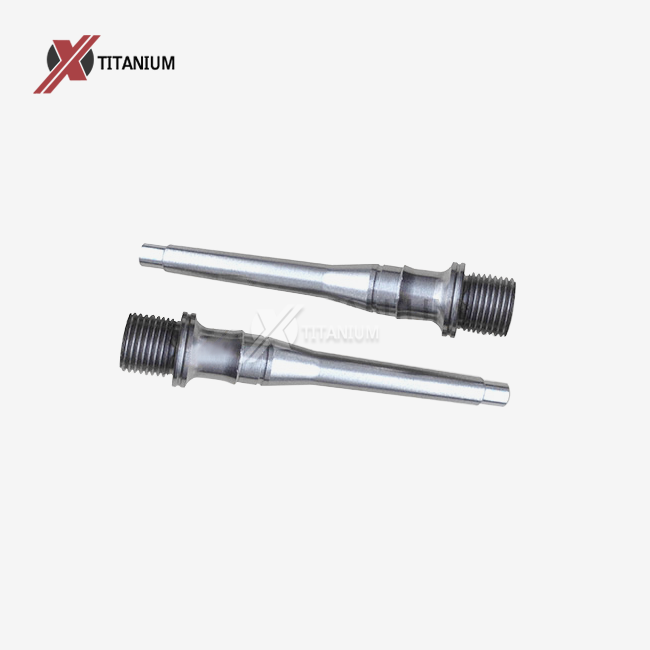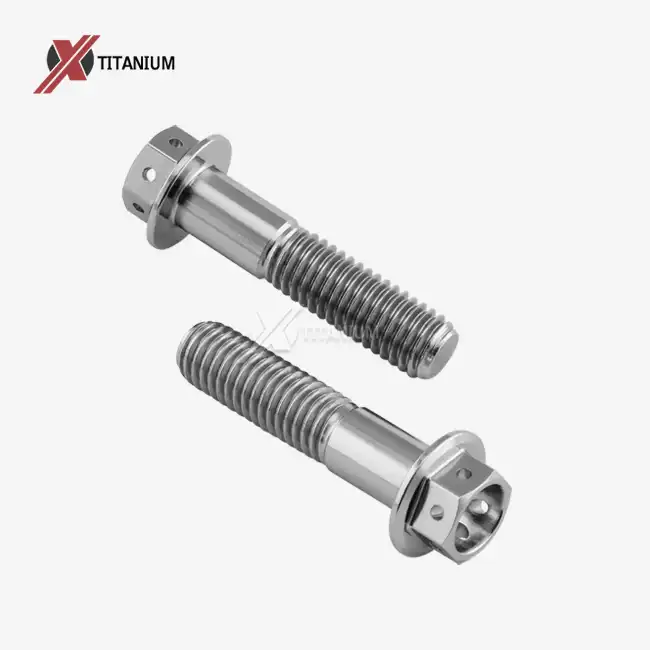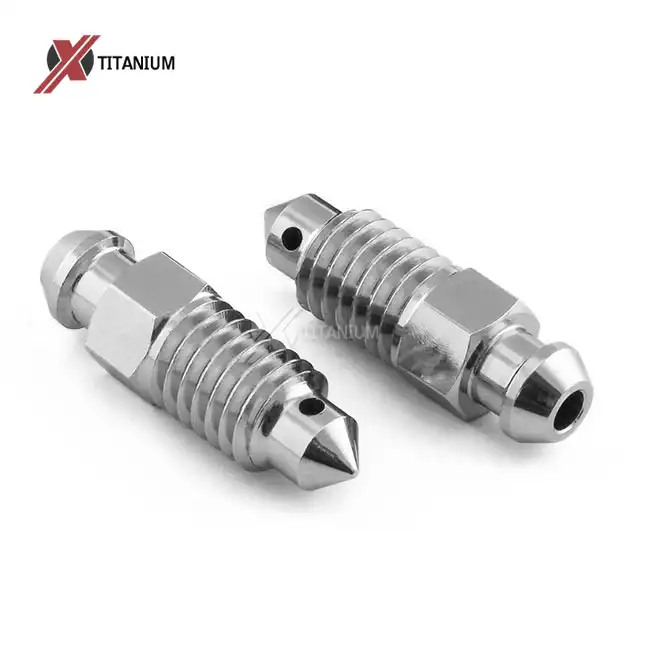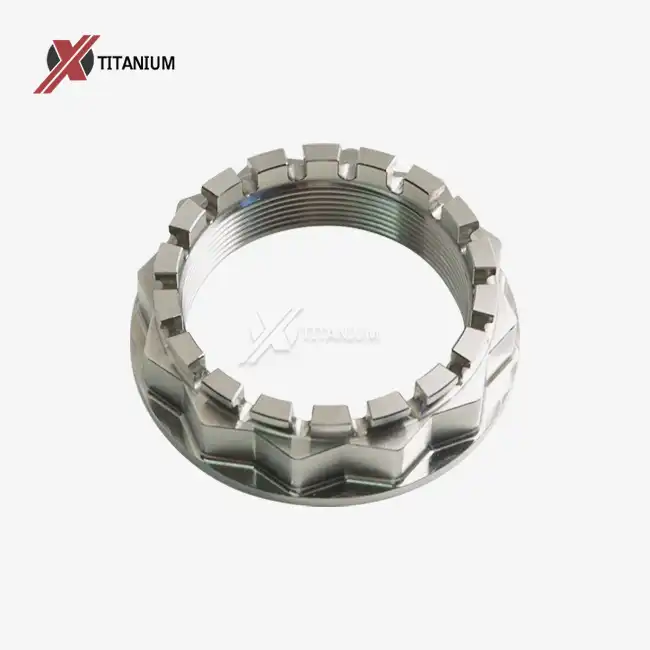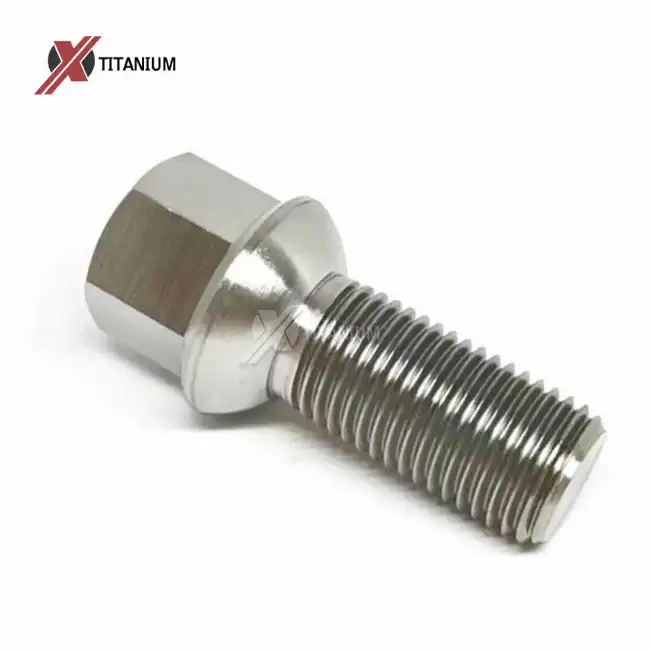Comprehending Pedal Spindle Materials: Titanium vs Chromoly
The Composition and Properties of Titanium Pedal Spindles
Titanium pedal spindles, especially those made from Grade 5 titanium (Ti-6Al-4V), are renowned for their exceptional strength-to-weight ratio. This alloy contains 6% aluminum and 4% vanadium, which enhances its already impressive properties. Gr5 titanium pedal spindles boast a tensile strength of approximately 900 MPa, making them incredibly robust and resistant to deformation under stress.
One of the most significant advantages of titanium is its low density, which translates to a lightweight pedal spindle without compromising on strength. This characteristic is particularly valuable for cyclists who are keen on reducing the overall weight of their bicycles to improve performance. Moreover, titanium's natural resistance to corrosion means that Gr5 titanium pedal spindles maintain their integrity even when exposed to harsh environmental conditions, including saltwater and various chemicals.
Chromoly: Composition and Characteristics
Chromoly, short for chromium-molybdenum steel, is an alloy steel that has been a popular choice for bicycle components for many years. It typically contains around 0.5-0.8% chromium and 0.15-0.25% molybdenum. These additions to the steel improve its strength, hardness, and resistance to wear and tear.
Chromoly pedal spindles are known for their durability and ability to withstand significant stress. They offer good tensile strength, typically ranging from 650 to 800 MPa, depending on the specific alloy composition and heat treatment. While not as lightweight as titanium, chromoly still provides a reasonable weight-to-strength ratio, making it a popular choice for budget-conscious cyclists.
Comparative Analysis: Gr5 Titanium vs Chromoly Pedal Spindles
Weight Comparison
When it comes to weight, Gr5 titanium pedal spindles have a clear advantage over their chromoly counterparts. Titanium has a density of about 4.5 g/cm³, while chromoly steel typically has a density of around 7.8 g/cm³. This significant difference means that a Gr5 titanium pedal spindle can be up to 40% lighter than a chromoly spindle of the same dimensions.
The weight savings provided by titanium spindles can make a noticeable difference in the overall weight of a bicycle. For competitive cyclists or those who frequently tackle hilly terrain, this reduction in weight can translate to improved acceleration, easier climbing, and reduced fatigue over long rides.
Strength and Durability
Both Gr5 titanium and chromoly offer excellent strength, but titanium edges out chromoly in terms of specific strength (strength-to-weight ratio). The high tensile strength of Gr5 titanium pedal spindles (around 900 MPa) combined with their lower weight makes them exceptionally resistant to bending or breaking under load.
Chromoly spindles, while strong, may be more prone to bending under extreme stress compared to titanium. However, it's worth noting that for most recreational cyclists, the strength of either material is more than sufficient for normal riding conditions.
Corrosion Resistance
One area where Gr5 titanium pedal spindles truly shine is in their superior corrosion resistance. Titanium naturally forms a protective oxide layer on its surface, making it highly resistant to rust and corrosion, even in harsh environments. This property is particularly valuable for cyclists who ride in wet conditions, near the coast, or in areas where road salt is used.
Chromoly, while more resistant to corrosion than regular steel, still requires protective coatings or regular maintenance to prevent rust, especially when exposed to moisture or salt. Over time, this can lead to increased maintenance requirements and potentially shorter lifespan for chromoly spindles compared to titanium ones.
Making the Right Choice: Factors to Consider
Performance Requirements
For high-performance applications, Gr5 titanium pedal spindles are often the preferred choice. Their lightweight nature contributes to reduced rotational mass, which can improve pedaling efficiency and overall bike handling. This can be particularly beneficial for competitive cyclists, where even small weight savings can make a difference in race performance.
Chromoly spindles, while heavier, still offer reliable performance for most cycling disciplines. They are particularly well-suited for mountain biking and BMX, where the ability to withstand impacts and rough riding conditions is crucial.
Budget Considerations
Cost is often a significant factor in the decision between titanium and chromoly pedal spindles. Gr5 titanium pedal spindles are generally more expensive due to the higher cost of raw materials and more complex manufacturing processes. This premium price can be justified for serious cyclists who prioritize performance and are willing to invest in high-end components.
Chromoly spindles, being more affordable, offer an excellent value proposition for casual riders or those on a tighter budget. They provide a good balance of strength and durability at a more accessible price point.
Longevity and Maintenance
When considering the long-term value of pedal spindles, it's essential to factor in longevity and maintenance requirements. Gr5 titanium pedal spindles, with their exceptional corrosion resistance and durability, often have a longer lifespan and require minimal maintenance. This can offset their higher initial cost over time.
Chromoly spindles may require more frequent inspections and maintenance, particularly in harsh conditions. However, with proper care and protection, they can still offer many years of reliable service.
Riding Style and Environment
Your riding style and the environment in which you typically ride should also influence your choice between titanium and chromoly spindles. For those who frequently ride in wet or corrosive environments, the superior corrosion resistance of Gr5 titanium pedal spindles can be a significant advantage.
On the other hand, if you primarily engage in aggressive off-road riding or stunts, the slightly higher ductility of chromoly might be preferable, as it can better absorb impacts without catastrophic failure.
Conclusion
In the debate between titanium and chromoly pedal spindles, both materials have their strengths and ideal applications. Gr5 titanium pedal spindles offer unparalleled lightweight performance, exceptional strength, and superior corrosion resistance, making them the top choice for cyclists seeking the best possible performance and longevity. Chromoly spindles, while heavier, provide reliable strength and durability at a more accessible price point, making them an excellent option for many riders.
Ultimately, the choice between titanium and chromoly pedal spindles depends on your specific needs, budget, and riding style. For those looking to invest in premium, high-performance components, Gr5 titanium pedal spindles represent the pinnacle of pedal spindle technology. Their combination of strength, light weight, and durability make them a worthy investment for serious cyclists.
If you're interested in exploring Gr5 titanium pedal spindles or other titanium components for your bicycle, don't hesitate to reach out to us at info@cltifastener.com or djy6580@aliyun.com. Our team of experts can provide you with detailed information and help you find the perfect titanium solutions for your cycling needs.
